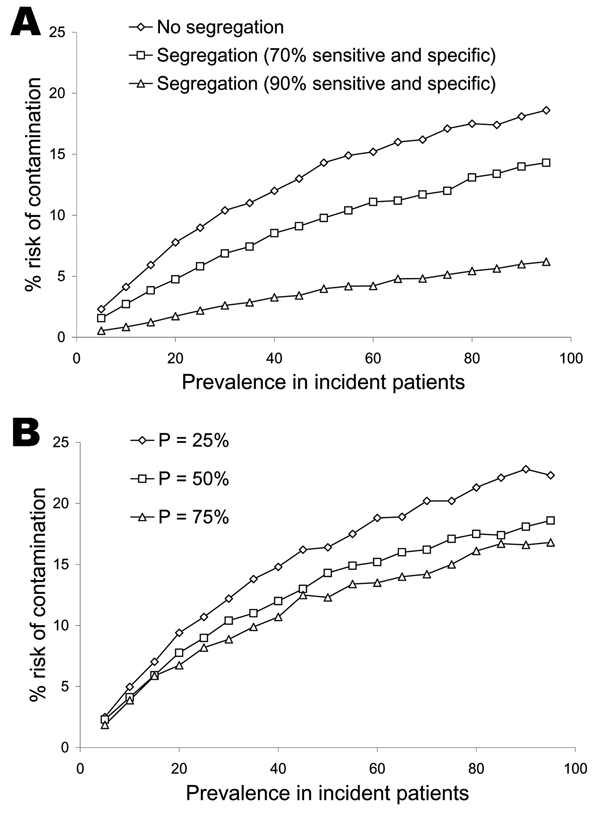Volume 12, Number 1—January 2006
Dispatch
Pathogen Transmission and Clinic Scheduling
Figure 2

Figure 2. Risk that an uncontaminated patient will become contaminated during his or her clinic visit as a function of pathogen prevalence in incident patients and clinic infection-control practices. A) Predicted effects of temporally segregating patients at high risk of being infectious to appointments at the end of the clinic day, using a screening instrument that is either 70% sensitive and specific or 90% sensitive and specific. Transmission, hand hygiene, and environmental decontamination probabilities are as given in Table 1. B, Effects of varying levels of effective caregiver hand hygiene (25%, 50%, or 75%) on pathogen dissemination. All other inputs (probabilities of contamination) are identical to those in A. Each data point represents the mean of 2,000 simulations of a model day. An annotated copy of the model, as well as more detailed simulations and supporting material, may be obtained from the corresponding author.
CrossRef reports the first author should be "Weinstein" not "Hota" in reference 14 "Hota, 2004".